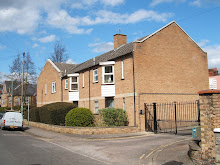
Objective achieved !!! Yesterday I passed my Commercial Pilots License test at the first time of asking. I still find it amazing that when I arrived here I had exactly one hour of flying time to my name. The test itself was a two and a half hour flight plus associated flight planning. My last lesson (a 2 hour flight) finished at about 1-00 pm and I was given the glorious news that due to bad weather forecast for the following day, I was to do my test one hour later. I was absolutely knackerred from my lesson, however, on the positive there simply wasn't time to get stressed so I got on with it. One hour of planning a navigation, getting Notams (Notices to airmen), TAF's/METARS (weather), mass & balance and performance calculations and there I was sitting in the cockpit starting the engines. The first part is a navigation exercise. You have to get to a pre-determined position at least 40 miles away (within + or - 3 minutes). Along the route I was asked to divert to another airport, in my case 57 miles away. This involves flying the aircraft whilst simultaneously plotting lines and taking bearings on your map. It went well and I got there bang on my ETA. Next followed a series on instrument manoeuvures under a hood (so I couldn't see out of the windows). This included descending and ascending turns, compass turns, flying the aircraft on limited panel (simulating instrument failure) and recovery from unusual attitudes. I then had to demonstrate stall recovery,steep turns and an engine failure drill in which I had to shut down an engine and retstart it in flight. The final stage of the CPL test was the hardest yet my best work of the day. I had to demonstrate various "normal" landings (with and without flaps) followed by an EFATO drill (Engine failure after take off). The EFATO drill is tough as the examiner throtttles back an engine at about 400 feet off the ground (simulating an engine failure). You have to regain control of the aircraft (it will yaw heavily, then bank and finally spiral into the ground if not compensated for) and then fly back around and land on one engine. I know I said that was the final stage (I thought it was) but it turned out it wasn't. When I got back to Goodyear airport, immediately on landing I was asked to take off again. As I was speeding up and close to lift off speed I was asked to abort the take off. I'd never done this in practice so I was relieved that I brought the aircraft to a stop without skidding and retaining centre line.
My time here is now complete and I'll be on the next BA flight to Heathrow. Generally I've been impressed with the people and OAT's whole operation out here but special mention goes to two instructors in particular. Brad Bartelson (pictured with me above) got me through my last two flight tests with some thorough and fun instruction. Jason Hart gets a mention for really turning my flying around at a time when I was finding it extremely tough. Thank you Jason and Brad.
So one more obstacle cleared and on to the Instrument Rating back in Oxford. Lots to work on to get to that standard but so far so good.







